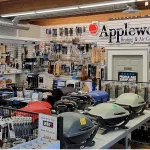
Coldstream council candidates address key issues at public forum
Nine of the 11 people seeking council seats in the District of Coldstream weighed in on important issues for the municipality during the all-candidates forum Wednesday evening (Oct. 5).
A crowd of approximately 130 people gathered in the Okanagan College Vernon campus’s lecture theatre for the citizen-organized forum to hear the potential councillors discuss their platforms on climate change, housing, protecting Kalamalka Lake and more.
Incumbent councillors Doug Dirk and Stephanie Hoffman, former mayor Jim Garlick, and newcomers Alex Dantzer, Don Jefcoat, Jeremy Levy, John Myhill, Simone Runyan and Jeff Stevenson participated in the forum that began at around 6:30 p.m.
Incumbent Pat Cochrane missed the event as he was on a vacation celebrating his 40th anniversary, while incumbent Glen Taylor had a prior engagement with Fright Night and was unable to attend.



